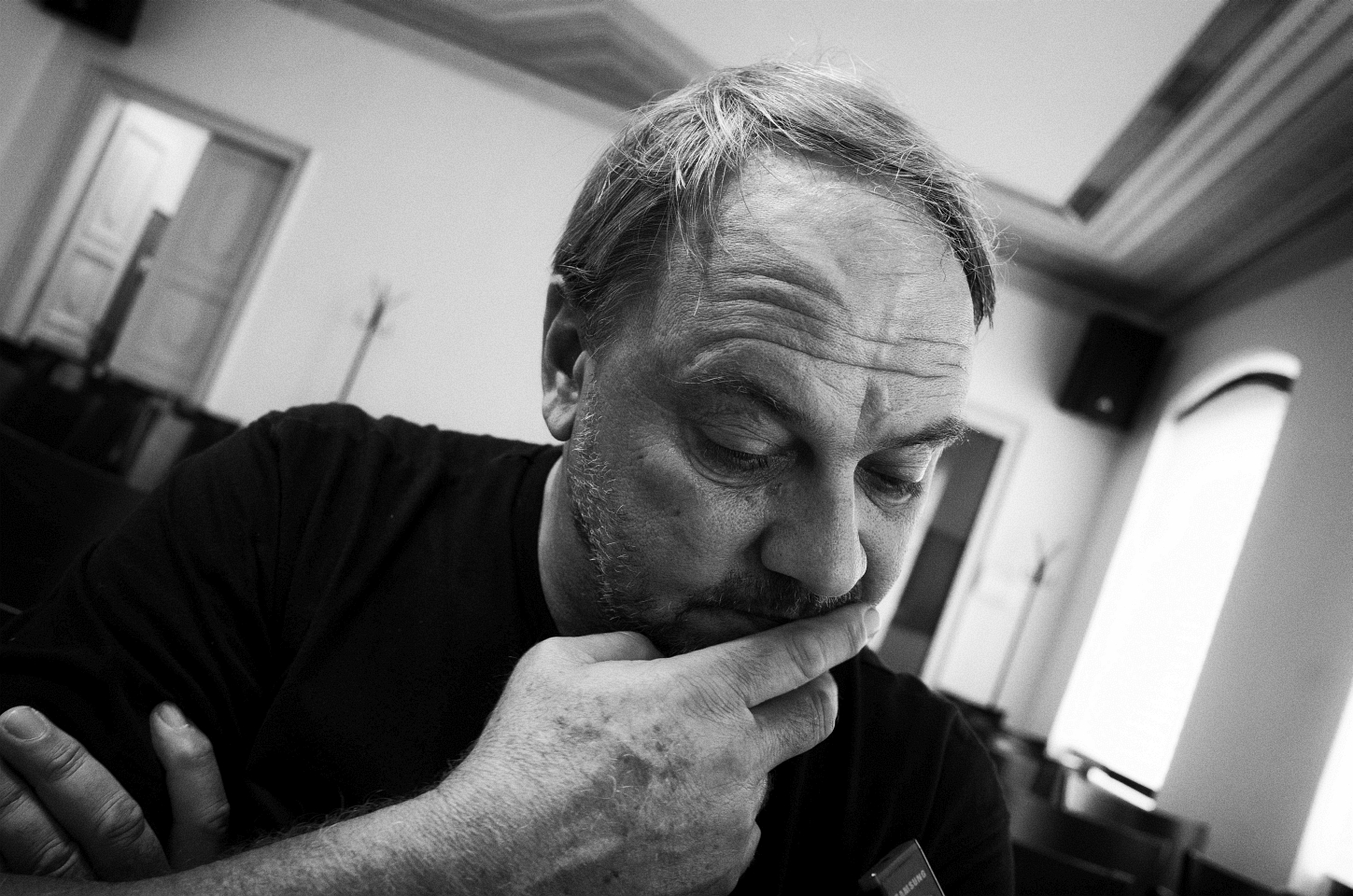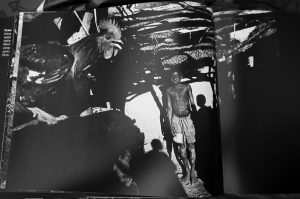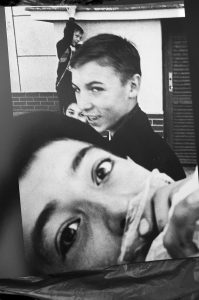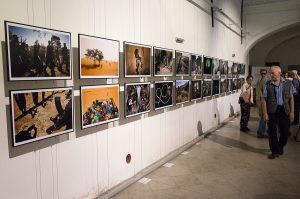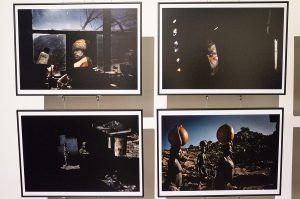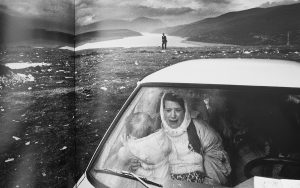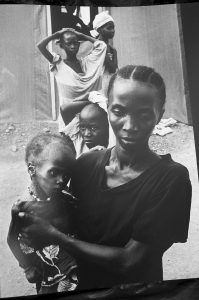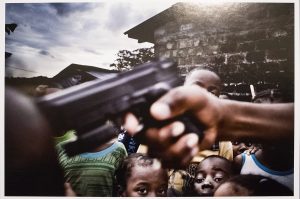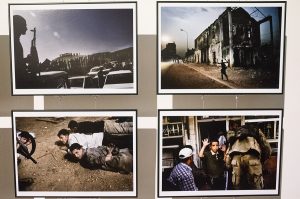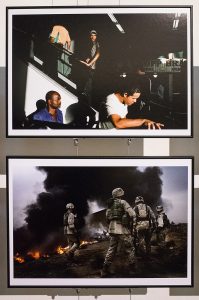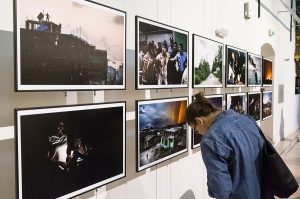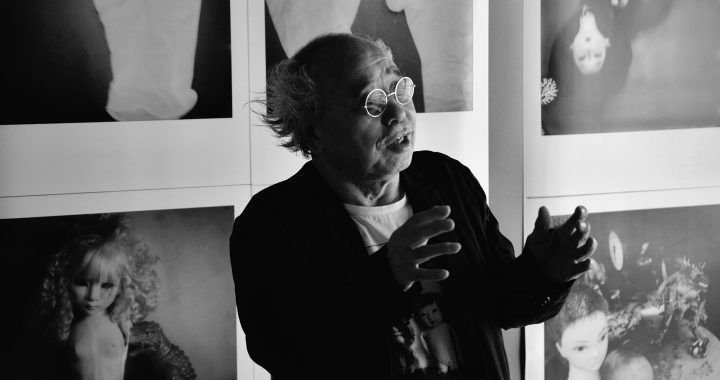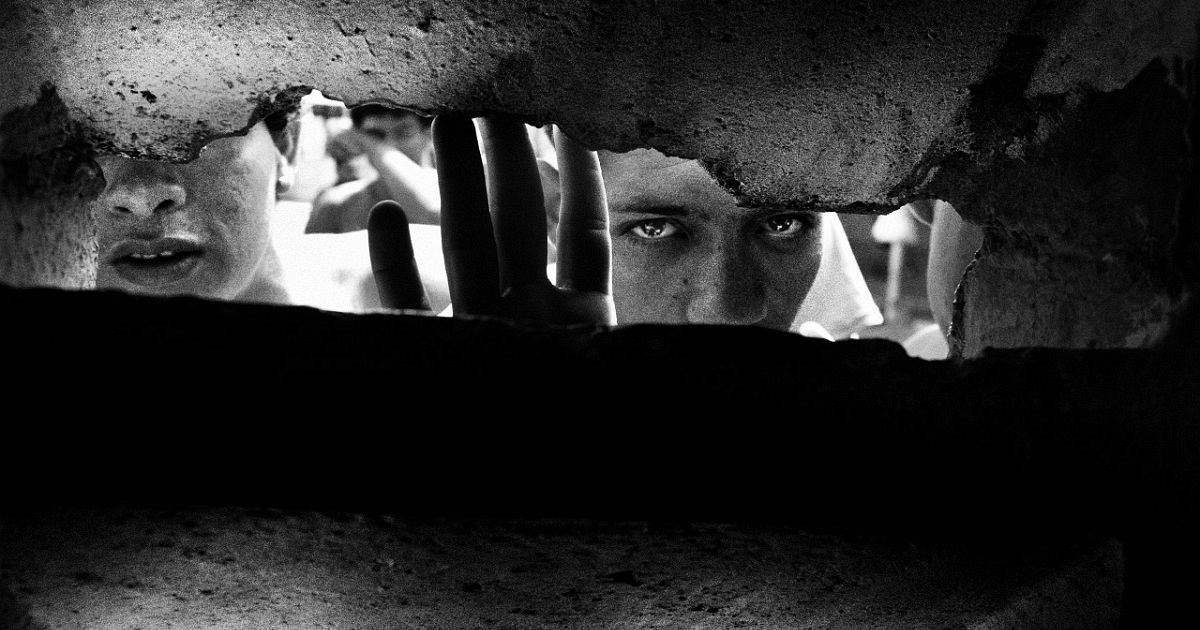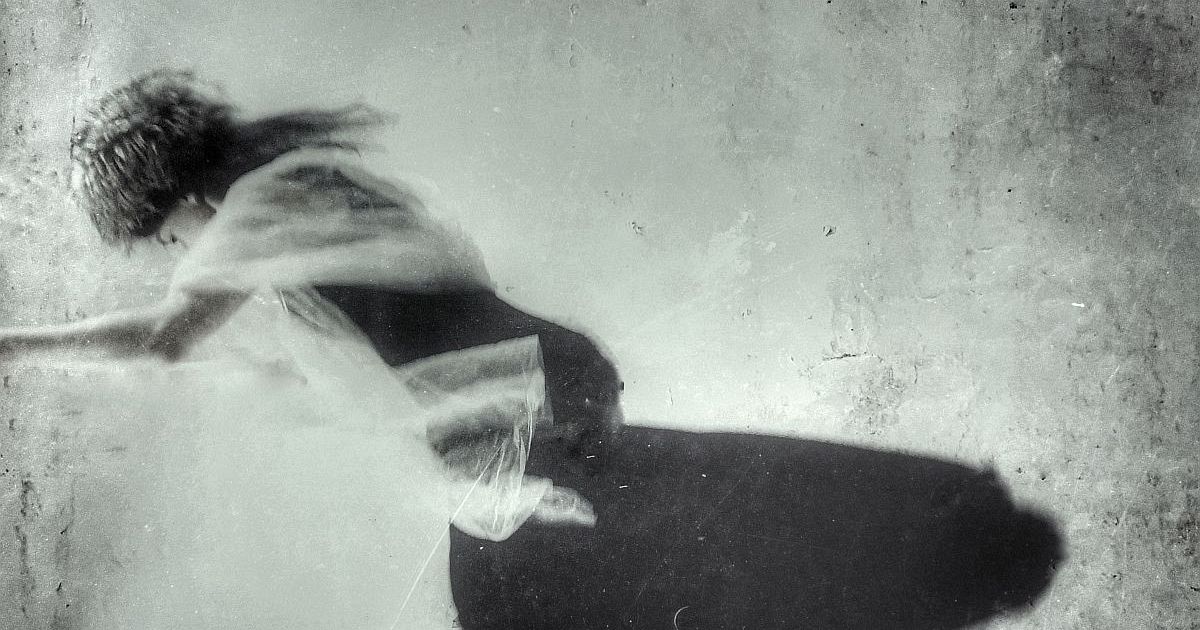Strong aesthetics, humanity and a personal commitment are the main features of the work of Francesco Zizola, Italian photographer and founding member of the NOOR photo agency and foundation. Thanks to Slovak Press Photo, we had the chance to meet him personally after a press conference and talked about his approach to documentary photography and his view on the world`s major crises. Francesco Zizola is an open-minded and straightforward person who cares about mankind and shares his concerns and thoughts.
How do you see nowadays Italy and its post-Berlusconi period?
Berlusconi didn’t go away, he is still there and, of course, we are facing the consequences of more than twenty years of his government. He tries to reduce and eliminate the importance of culture and education in the country. That`s the worst part I must note. Growing ignorance and the lack of knowledge are affecting the country. There is a great conflict of interests and we are still facing the dominant position of one man who is controlling everything in the media industry. That`s why we are listed among the worst countries in Europe in terms of freedom of press.
Your photography has a human scent, the scent of society. Is it influenced by your profession of an anthropologist? Do you use it in your work?
More than my studies, I am influenced by my family which very tightly believes in and is linked to humanism. Of course, my studies were always oriented more on understanding human beings in that concept.
You have published a great book called Born Somewhere. Was this topic created before or after shooting?
It was created before. The name was also different at the beginning. It was called Heirs of 2000, because I started this project in 1991 and the intention was to finish it by 2000. At the beginning of the new millennium, I intended to show what I thought was a synthesis of the condition of human beings, it was a very pretentious project. In that very year I realized it had to be more complex, so I took three more years and changed the title, as well. It was a long project, changing and growing along the way.
Your work with light reminds Italian masters. Are you influenced by their prism?
I think my masters are more painters than photographers. Especially those from the Renaissance period, for example, Caravaggio in terms of visual and aesthetics education and the necessity to feel the empty space through images meaning shapes, colors, grades and light.
There is a strong generation of documentary photographers in Italy. Are you in touch with them?
I have contact both with my contemporary colleagues and the older ones. We have great photojournalists, for example, Letizia Battaglia. She is a photographer that made the Italian history of photojournalism, not only in terms of photographs but also in terms of contents. She is very famous for topics regarding the mafia war in Sicily and is an example of engagement with social and political issues. She is still a role model for a lot of photographers, especially for the younger generation of female photographers. I have a great respect for Ferdinando Scianna, another photographer who made the history of photojournalism in my country, just like Gianni Berengo Gardin and others. Several masters are still alive, and I also have a great respect to those who are not with us anymore. There is a new generation of photographers who are still bringing the witness in future direction. So yes, I am happy about that. I know that Italy is a country which generates strong visuals.
It is not a coincidence that perspective was invented in Italy. If we see and think in terms of photography, it is so strong also because of that invention. Perspective is a way to see the third dimension on a flat surface, like a piece of paper or a frame. The third dimension there is not real; it is an invention, a creation. The rule of perspective was invented in Italy, as well as camera obscura.
What are the criteria for deciding whether a project is to be in black-and-white or in color?
Basically, it depends on the reason why I am doing a project. So it always comes from a thought, including the level of complexity which I would like to reach with the language. I have to consider what kind of public I would like to touch and how. Of course, there are different reasons, different stories for different public. I can give you some example. Thirteen years ago, I did a project about children´s conditions in the world, as I`ve mentioned before. I decided to do it in black-and-white because the stories I wanted to show were real stories of real human beings affected by some issues. But the level I want to communicate pertains to some symbolic level, so showing reality with subjective eyes and trying to communicate symbolic levels is quite complicated, and one way to make the operation easier is taking out the colors. If you are looking for something related to reality without colors, you immediately step into a different level. Of course, reality without colors doesn’t exist, so even unconsciously, as a reader, you consider something you know as non-existent, but you consider it as if it existed. It is a double perception that brings you to consider the symbolic level automatically there.
NOOR is an international group. Do you feel the interference of cultures in the aspect of art? Do you have some open discussions which result in different angles about some topic?
Of course, the discussion is always very lively, and the confrontation is sometimes even harsh because we`re coming from different countries, have different experience and different age. That`s what makes the collective in the agency more alive compared to others, since we try to renew ourselves, to bring in new members. At the beginning we decided to stay small, so we fixed the maximum number of members. There is a process to become a member, but anyway, it takes some time. It is a small process, but the aim is to renew ourselves. New members bring new concepts and new languages. Of course, there is some sort of resistance coming from the older generation in the agency, but it`s the tension that makes the quality.
It is natural, I think, isn`t it?
Dialogues and differences are not bad, it is also a message for your politicians. Differences, new things, new visions, new blood make the world more interesting.
What is the most important thing for you when making a decision to start a project?
Well, I am getting older. So now, I have to say, I use as much energy as I can on things I really love to do. After years, decades of millions of different things and projects, I am trying to focus on few ones which are really giving me the sense of my way to express myself. Now, for example, I`ve just presented my first short movie at a very important festival in Venice [Zizola`s movie As We Were Tuna documents an ancient fishing technique, Ed.]. For me, it is a completely new chapter of my life as an author. I am walking in a new project as a photographer, which will last ten years, more or less. It is something I want to do seriously, so it brings me to making decisions and skipping things. I am less and less accepting assignments that are of no interest to me or are not in the area I do the project. So, usually, it is the opposite: when you are younger, you desire to move around and take things at whatever occasion. As for me, I´m focusing now more sharply on my things. I am still saying no to a lot of things.
You shot a series about a sunk ship. What led you to dive fifty meters below the surface? Are you a diver?
When I was young I had two passions, photography and diving, but just recently I`ve started to explore more the diving knowledge for photography as a storyteller. I started to take pictures under water seven years ago, and I still photograph a lot of pictures there.
Immigration in Italy has been overlooked, left by the EU to the Italian government for many years. What is your opinion about the current EU immigration policy?
If we don`t work together on a common solution, it will lead to the end of Europe. That`s the point. We are facing a very very tough period now, and after seventy years we are creating a premise of war in Europe. Europe is getting old. If we isolate ourselves by closing our borders, we will not be wealthy and healthy. We lack some really new visions that would lead us to a new reality with new persons and an ability and courage to share our culture with others and create a new political entity. Closing borders was never a good solution, because when it happened it was a disaster, including war. So, I am very pessimistic.
People say that migration is just a today´s issue. But, for example, Salgado did a big book about migration in the past. Migration has always existed in the world and Europe was very comfortable and sleeping, but now it has woken up and is scared.
It is very simple. Europe was always flourishing thanks to raw materials we took from Africa, Asia and the Middle East, and these sources made us rich. But we gave nothing back. Nowadays, these countries are fighting each other because there is climate change and a lack of opportunities. Thanks to the internet, it is already common information that we exploited all the richness which were there. People do not stand it any longer, they face war, famine, lack of resources, and they want to share the part of the richness that we stole. It is happening now, and we must decide whether we´d consider ourselves thieves or people who are able to share.
In June 2014, you participated in Another Crimea project, where several members of NOOR, Magnum and VII agency spent ten days in Crimea shooting a different face of this region. Your approach was interesting, keeping in mind Crimea`s history. In spring 2014, Crimea was annexed by Russia. Some Ukrainian photographers wrote a statement because they did not see this annexation in the output. What is your opinion?
It was not my part of the project. A female photographer from Magnum [Olivia Arthur, Ed.] visited the different ethnic groups and societies in Crimea [Russian, Ukrainian and Tatar, Ed.]. She documented it and it was published as part of the project. Almost each one of us tried to include this topic in the project. For example, I was working on the history of Ukraine, especially on the history of photography. As you know, one of the first examples of war photography happened there, during the Crimean war [1853-1856, Ed.], by photographers Fenton, Robertson, Beato and Klembovsky. There is a photo by Robert Fenton [The valley of the Shadow of Death, Ed.] with cannonballs and without cannonballs on the road to Sevastopol. It means the photographer set it up and it was staged with the aim to manipulate the public opinion in England which was involved in the war. My story was therefore about propaganda. It was about photography and about how much photography can depict the viewer in one sense or the other. I made it in Crimea. Sounds familiar?
Francesco Zizola (*1962) has documented the world’s major conflicts and their hidden crisis, focusing on the social and humanitarian issues. In 2008, he founded 10b Photography (Rome, Italy), a multipurpose center for digital photography promoting photography culture through exhibitions, workshops and lectures. He received several awards over the years, including ten awards in World Press Photo contests and four Picture of the Year International awards (POYi). In 2003, Henri Cartier Bresson included one of Francesco’s pictures among his 100 favorites. This collection was made into an exhibition – Les Choix d’Henri Cartier Bresson – and a book. Francesco published seven books, including Uno Sguardo Inadeguato (Collana Grandi Autori, FIAF, 2013), Iraq (Ega/Amnesty International, 2007) and Born Somewhere (Delpire/Fusi Orari, 2004), an extensive work on the living conditions of children from 27 different countries. In 2014, he was a jury member of the World Press Photo Contest. In 2016, Francesco was awarded the 2nd prize in the Contemporary Issues category of World Press Photo for his series ‘In the Same Boat‘. His short movie “As We Were Tuna” documents an ancient fishing technique and was featured at the festival in Venice and obtained SIAE Creative Talent award. Francesco lives in Rome.
Thanks to the Slovak Press Photo Foundation and Laco Maďar for their support during the interview.
Photo on the right © Matúš Zajac. Other photographs taken at the exhibition Inadequate Glance by Francesco Zizola in Bratislava and from the book Francesco Zizola – Born somewhere, Delpire, 2004.
